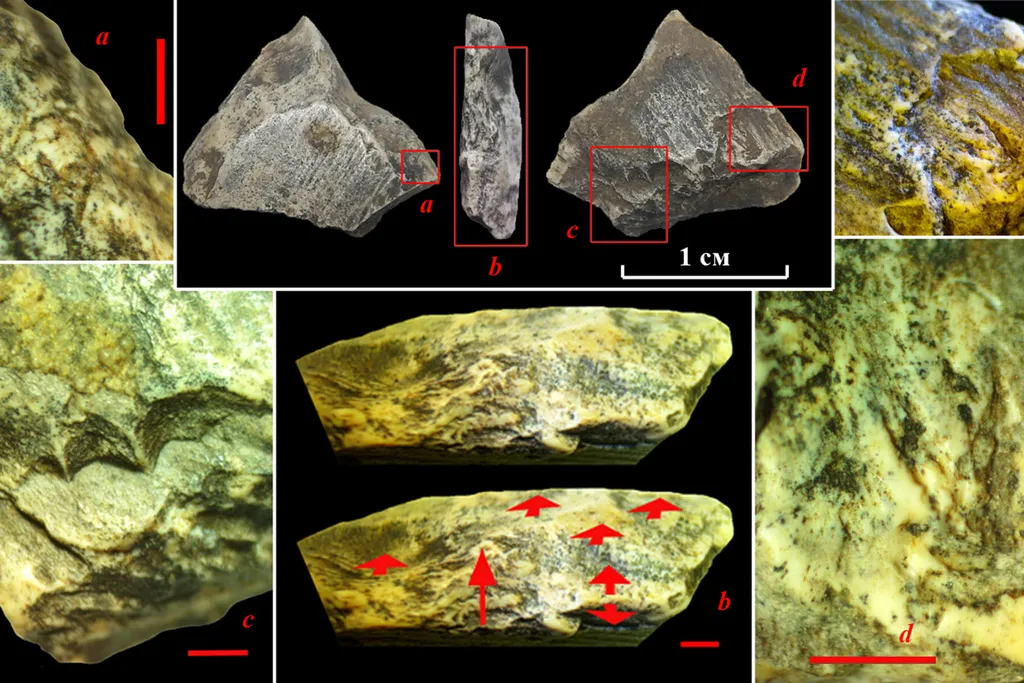Are These Mysterious 400,000-Year-Old Artifacts the Oldest Ivory Objects Made by Humans?
New Research
Are These Mysterious 400,000-Year-Old Artifacts the Oldest Ivory Objects Made by Humans?
Found in Ukraine, the fragments show signs of human manipulation—though researchers still haven’t ruled out the possibility that they were shaped by natural forces
The ivory fragments show signs of manipulation by early humans.
Stepanchuk et al. / International Journal of Osteoarchaeology, 2025
Archaeologists have unearthed mysterious 400,000-year-old artifacts made from mammoth tusks that may be the oldest human-made ivory objects ever found.
They describe their findings in a recent paper published in the International Journal of Osteoarchaeology.
During excavations at a site in Ukraine’s Southern Bug Valley, researchers discovered 24 ivory fragments, as well as artifacts made of flint and quartz. At the Lower Paleolithic site, known as Medzhibozh A, they also found the remains of horses, woolly rhinoceroses and large wild cats.
Based on the site’s age and location, the team suspects it was once inhabited by a human ancestor called Homo heidelbergensis. But they haven’t found any evidence yet to confirm this hunch.
Researchers were especially interested in the ivory fragments, so they brought them back to their lab and looked at them under a microscope. They also conducted a 3D analysis.
“The study of the ivory began without a specific hypothesis, but their unusual characteristics, indicative of intentional modification, prompted closer examination,” says lead author Vadim Stepanchuk, a researcher at the National Academy of Sciences of Ukraine, per Phys.org’s Sandee Oster.
Their analysis suggests that 14 of the fragments were created by humans. The artifacts show signs of various shaping techniques, including one that likely involved placing the ivory on a rock anvil and using another rock to chip away flakes. They were probably made from the tusks of a mammoth species called Mammuthus trogontherii.
Some of the artifacts, like those shown here, appear to have been created using a technique known as "bipolar-on-anvil."
Stepanchuk et al. / International Journal of Osteoarchaeology, 2025
The artifacts are fairly small. Additionally, ivory is a relatively soft material, especially compared to stone—too soft, at this size, to be used for cutting. As such, scientists are still puzzling out how early humans may have used them.
One theory is that they were used to demonstrate effective techniques for creating tools out of other materials—like a teaching aid. Alternatively, they may have been children’s playthings.
The region’s inhabitants may also have been experimenting with ivory because they couldn’t find enough high-quality stones to turn into tools.
“Their shapes mimic typical flake tools from the site—a pointed piece, a core-like fragment and tiny waste flakes,” Stepanchuk tells McClatchy’s Irene Wright. “The resemblance to real tools, combined with the fragility of ivory, led us to consider a social or behavioral explanation. They may reflect play or learning behavior—perhaps children copying adult knappers.”
However, the scientists haven’t ruled out the possibility that the ivory pieces were shaped by natural forces—such as mammoths bashing their tusks together while fighting. They could potentially test that theory by running experiments with modern elephant tusks and then comparing them to the artifacts, reports New Scientist’s Taylor Mitchell Brown.
But if they were shaped by human hands, the ivory fragments “add to an apparently increasing appreciation of the intelligence of pre-modern humans,” Gary Haynes, a retired anthropologist at the University of Nevada who was not involved with the research, tells New Scientist.
Stepanchuk echoes that sentiment, telling IFLScience’s Benjamin Taub the discovery “hints that, even at this early stage, hominins may have engaged in what might be described as imitative or socially motivated activities.”
In addition, if the artifacts were deliberately created by humans, the find would push back the timeline for human ivory processing by thousands of years.
According to the paper, the earliest known use of ivory for artifact manufacturing dates to the Upper Paleolithic period, which lasted from roughly 50,000 to 10,000 years ago. Scientists have also found evidence of ivory artifacts that were potentially shaped by Neanderthals roughly 120,000 years ago, per Phys.org.
“The discovery was indeed unexpected,” Stepanchuk tells IFLScience. “We had never seen or heard of ivory artifacts from the Lower Palaeolithic.”
Get the latest stories in your inbox every weekday.


